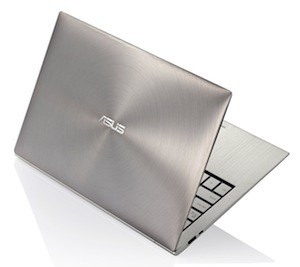My Toshiba Ultra-book has been dying for some time. I think if we hadn’t moved country, we would have replaced it about 6 months ago as it’s about 4 years old now and can barely load a website in addition to having lost both a d key (which was replaced Christmas 2014) and an i key (which was replaced with a bulky extra keyboard from the closet as I knew a new one needed to be selected soon).
As a Linux systems engineer (US)/ administrator (UK), naturally, Chris uses Linux, a series of alternatives to the Windows and Mac operating systems. I also use Linux and have done since my laptop died when we first got together in 2010. At that time, I used his laptop with Ubuntu on it for a few days while we were waiting for my new one to arrive. As soon as I tried Windows 7 after a few days of Ubuntu, I was done with Windows.
 The first time I had a Linux laptop, there were no issues. It was just a question of deleting Windows and putting Ubuntu on in its place. Everything just worked.
The first time I had a Linux laptop, there were no issues. It was just a question of deleting Windows and putting Ubuntu on in its place. Everything just worked.
Over time, this has become more and more difficult. With my last one, the Toshiba, it mostly played nicely with Xubuntu (a variation of Ubuntu), but Chris did end up writing a script to get the screen brightness to respond to the buttons on the keyboard it was meant to. This wasn’t too big of a deal at the time, but may have been a sign of what was to come.

It has been a much greater faff this time. We wanted more powerful machines so that we could do complete encryption and keep our data safe. This meant that anything without an i7 processor was ignored. Given it looks like only a handful of brands currently support, or at least, don’t actively hinder, Linux, this really limited our options, even with the most popular and well developed flavors of Linux.
The flavor I decided on this time was Linux Mint as it gets great reviews and is very much supported. I also don’t care for how Mac-like Ubuntu has become. This is why I previously used Xubuntu instead of Ubuntu itself. This is a great thing about Linux. Even if it’s a bit of pain to get on a laptop in the current climate, you do have real options. The different flavors can feel very different from each other. There is something for everyone and the cost (nothing) isn’t an issue.
I don’t think it’s a coincidence that the three brands that do it best also all sell Linux servers that people who do what Chris does have to deal with in their jobs all the time. Linux is much bigger on servers than it is on personal computers. I suspect these brands may have not wanted to annoy the people who use their professional products by killing the thing they may want to work with at home and at work on their personal computers. These three brands who are most Linux friendly are Dell, Lenovo, and HP, hardly the sexiest companies ever, but we made do.
Here’s the video:
We didn’t fully realize how much more complicated things had got going in when we bought the Asus as it is clearly not from the above list. This laptop was much bigger and more powerful than my old Toshiba Ultra-book. In a sense, I am glad it didn’t workout as I don’t think I like 15 inch laptops. They are more likely to have more power but they also have this massive, unnecessary space between the edge of the laptop and the keyboard for mouse pad I am just going to disable anyway as I hate them.
Speaking of mouse pads, if you happen to like them, or at least want them to work, they don’t work on this particular laptop with Linux installed. In addition, the internet connection kept dropping out despite our Cox internet being superb. It works well with our other 7 devices – 3 mobile phones (2 Samsung and 1 iPhone), 3 laptops (which run Ubuntu, Xubuntu and Mac OS), and a server (Linux, obviously). It also worked poorly with my lovely Bose noise canceling headphones in that it had a horrible hissing noise when I tried to cancel any noise (these also work well with our other devices). As a result, we had to return the clunker of an Asus and try another laptop.
Stay tuned for part two to find out what we tried next.


Pingback: Adventures in Linux Mint: Part 2 – Lenovo Yoga 900 2 in 1 – HiJenx